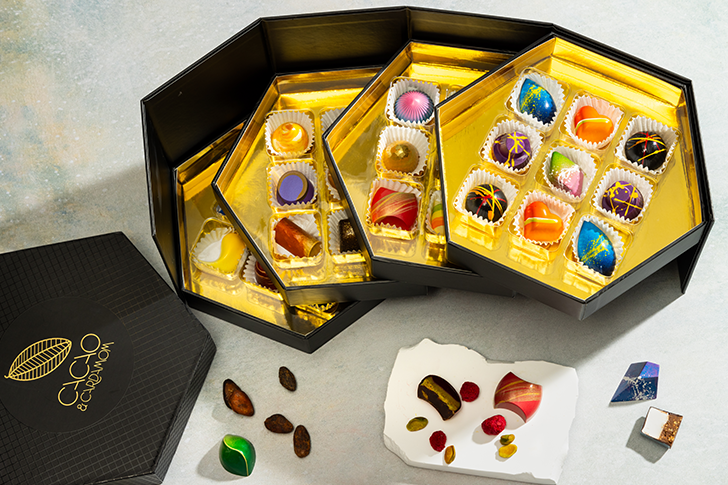Best Gourmet Chocolates

Secrets in the Soil: Hunting Chocolate’s Rarest Gems
Forget limited editions or gold foil. The rarest chocolates aren’t made – they’re rescued. They come from beans so threatened, a single storm or disease could erase them forever. These aren’t bars – they’re edible history.
1. Ghost Beans: Near-Extinct Heirloom Cacao
Why rare?
- Genetic unicorns: Pale, delicate varieties prone to disease, yielding 10x less than common cacao.
- Surviving only in secret, biodiverse "cacao sanctuaries" – often just a few dozen trees left.
-
Tastes like:
Honeycomb, jasmine, or tart red berries (vanishingly subtle – nothing like commercial chocolate).
2. Wild Jungle Chocolate
Why rare?
- Beans foraged not farmed from ancient trees in protected rainforests.
- Illegal to cultivate commercially; harvests rely on Indigenous gatherers’ deep forest knowledge.
-
Tastes like:
Unpredictable! Think tropical fruit, earth, and minerality – no two harvests alike.
3. Lightning-Strike Terroir
Why rare?
- Grown only in microclimates where volcanoes, typhoons, or extreme altitude destroy most crops.
- Farms are tiny, yields microscopic (think 50kg/year for the entire world).
-
Tastes like:
Smoke, stone fruit, or balsamic tang – the literal taste of a place fighting to survive.
4. Resurrected Recipes
Why rare?
- Recreations of pre-industrial chocolate using tools like volcanic stone grinders and wild fermentation.
- Requires obscure heirloom beans + Indigenous methods lost for centuries.
-
Tastes like:
Gritty, floral, or fiercely spicy – time-travel in your mouth.
Why They’re Disappearing:
Monoculture Farming: Replaces diverse heirlooms with 1 disease-prone clone
Deforestation: Destroys wild cacao habitats
Climate Shocks: Wipes out micro-farms overnight
Lost Knowledge: Elders passing techniques before teaching
How to Spot True Rarity (No Brands Needed):
-
The "GPS Test": Does the wrapper name a specific valley or forest? (Generic countries like "Peru" don’t count.)
-
The Genetic Clue: Labels like "Pure Nacional," "Criollo Blanco," or "Pentágona" signal endangered heirlooms.
-
The Harvest Number: Look for "Wild Harvested" or "Foraged" – not "Farm Grown."
-
The Craft Stamp: Words like "stone-ground," "cold-processed," or "ancestral fermentation."
Why Taste Matters Beyond the Hype
Eating these isn’t indulgence – it’s preservation. When you choose bars made from ghost beans or wild cacao:
- You fund farmers guarding biodiversity (not corporate plantations).
- You help document lost flavors before they vanish.
- You taste what chocolate was before mass production stripped its soul.
Your Hunt for the Rare Starts Here...
Seek makers who:
Name their farmers (not just "ethical sourcing")
Celebrate bean genetics (heirloom variety front & center)
Embrace wild imperfections (variable harvests = real authenticity)
Follow the stories, not the logos. The rarest chocolate doesn’t shout – it whispers from the jungle canopy.
Taste Vanishing Flavors (While You Still Can)
At Cacao & Cardamom, we chase chocolate’s rarest ghosts. We partner directly with guardians of heirloom cacao to bring you bars that are more artifact than snack.
What is the rarest type of chocolate?
By Sandeep Pamnani
In Artisan chocolate, Fancy chocolate bars, Rarest chocolate


